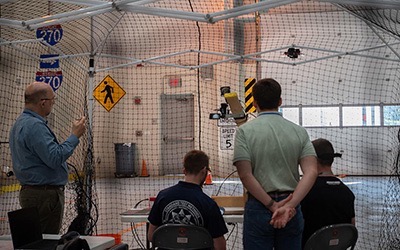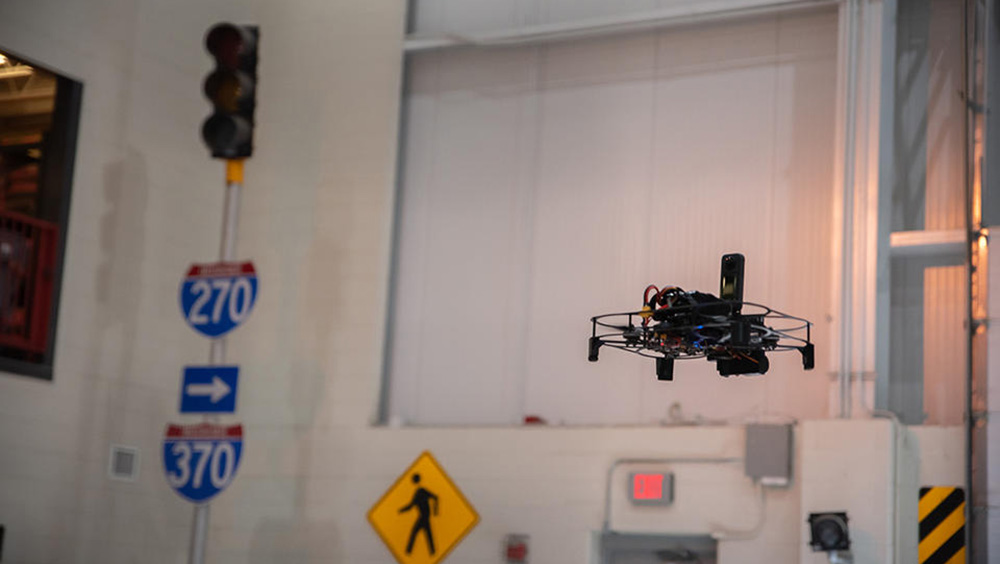Flying an uncrewed aircraft system (UAS, or drone) in indoor environments can be challenging due to lack of GPS coverage and the need to maneuver through tight spaces. Credit: R. Wilson/NIST
When first responders need to rescue people from an earthquake-ravaged home, they need real-time information. If law enforcement officers are looking for a shooter in a crowded building, they must learn everything they can about the scene.
|
ADVERTISEMENT |
Emergency responders need to know where people are and whether the building is structurally stable enough for them to attempt a rescue.
But timely information can be scarce during a natural disaster or other dangerous incident.
In many of these situations, sending an uncrewed aircraft system (UAS)—also known as a drone—into a building can provide lifesaving intelligence by capturing video footage, identifying potential hazards, and mapping the inside of the building.

Judges watching the competition. Credit: R. Wilson/NIST
…

Add new comment